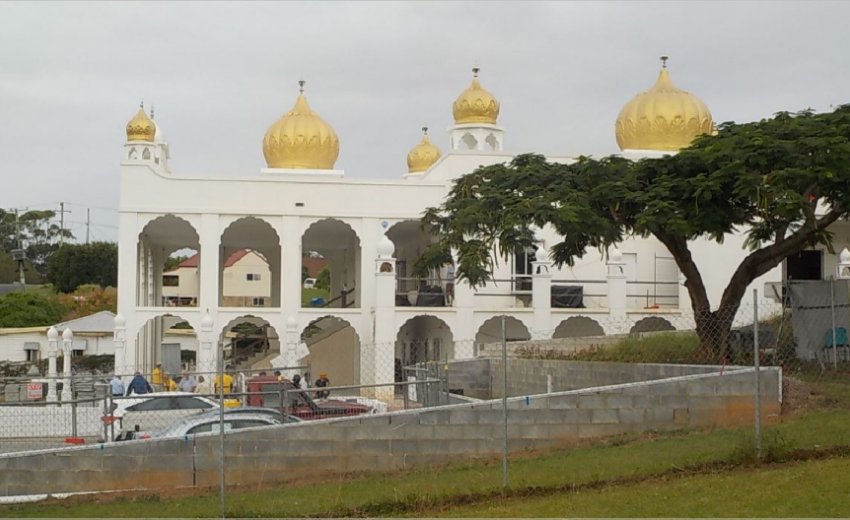The opening of the First Sikh Temple in Woolgoolga, NSW, Australia took a step closer at an afternoon tea in the meeting room on the ground floor of the new temple on Wednesday, 18th April. Referring to the time taken for the building to materialise from a plan made in 1999, someone had joked to one of the main drivers of the project, Dr Amarjit More, that the Taj Mahal had taken nearly twenty years to build. Though the joke referred overtly to time, it might well have been an unconscious allusion to the love that inspired and drove both buildings, echoed in the beauty of both and in the loving detail of their exteriors and interiors.
Among the guests were the Mayor of Coffs Harbour City Council, Denise Knight, and the local Member of Parliament, Andrew Fraser. Both spoke of their admiration of the beauty of the building and acknowledged the positive contribution made by the Sikh community to the area.
Doctor More thanked the Lion’s Club and the many people - Sikh and non-Sikh - who had helped ease the course of the building. He spoke of the cost which had been borne in total by the local community. And except for the cost of stone from Rajasthan, more than 90% of the $4million so far expended has been spent on labour and materials acquired locally.
It is half a century since the earlier Temple, the first in Australia, was opened in 1968 and the event was recalled in a speech by The Honourable James Spigelman AC QC, then Chairman of the ABC, in 2012 at the Four Corners’ book launch which celebrated fifty years of the programme.
The edition he remembered best was 1968’s ‘The Sikhs of Woolgoolga’. As an active participant in the 1965 Freedom Ride, James Spigelman’s interest was roused by the revelation that Sikhs were excluded from the local bowling club, which he said, constituted the height of social acceptability in Woolgoolga. Spigelman was fascinated at the idea of finding a community of Sikhs in NSW. He recalled Bob Moore, the Four Corners presenter, reporting that someone associated with the programme said everyone thought their legs were being pulled when it was discovered that a Commonwealth Government minister was going to open a Sikh temple in NSW.
Spigelman thought there could not be such an event in Australia in 1968.
But there was. In June 1968 the then Minister for Works, Senator Reginald Wright, later Sir Reginald Wright, was invited to open the temple. Wright was a great parliamentary floor-crosser, and his speeches were delivered with conviction, knowledge, and often with dash.
Though he arrived with his dash intact, his knowledge was lacking. He was unaware that if you enter a Sikh temple, you must cover your head. This very Aussie character appeared on national television with a hanky knotted in four corners on his head and Jim Spigelman thought it was a terrific image that displayed Australian innocence.
Innocence or ignorance, both were again on display when Senator Wright quoted from Rudyard Kipling. ‘East is east and west is west, and never the twain shall meet’. Kipling is not a friend of the Indian or the Sikh, and his choice was unfortunate.
Now fifty years later we are on the eve of another temple opening; an opening in which the innocence and ignorance of the past has been replaced with awareness and knowledge; where there is neither east nor west; where the twain has met.
Note: My mother and Amarjit’s father - both deceased - worked on the opening of the first temple.
--------------------------------------
Related article: The Twain Has Met In Woolgoolga II
